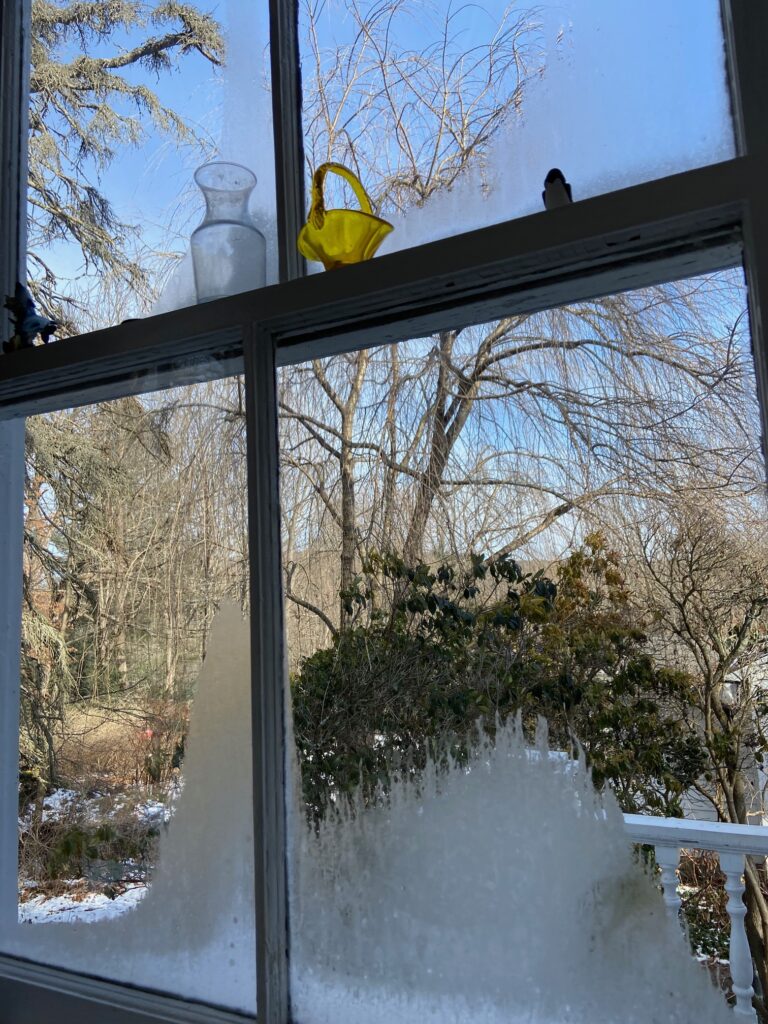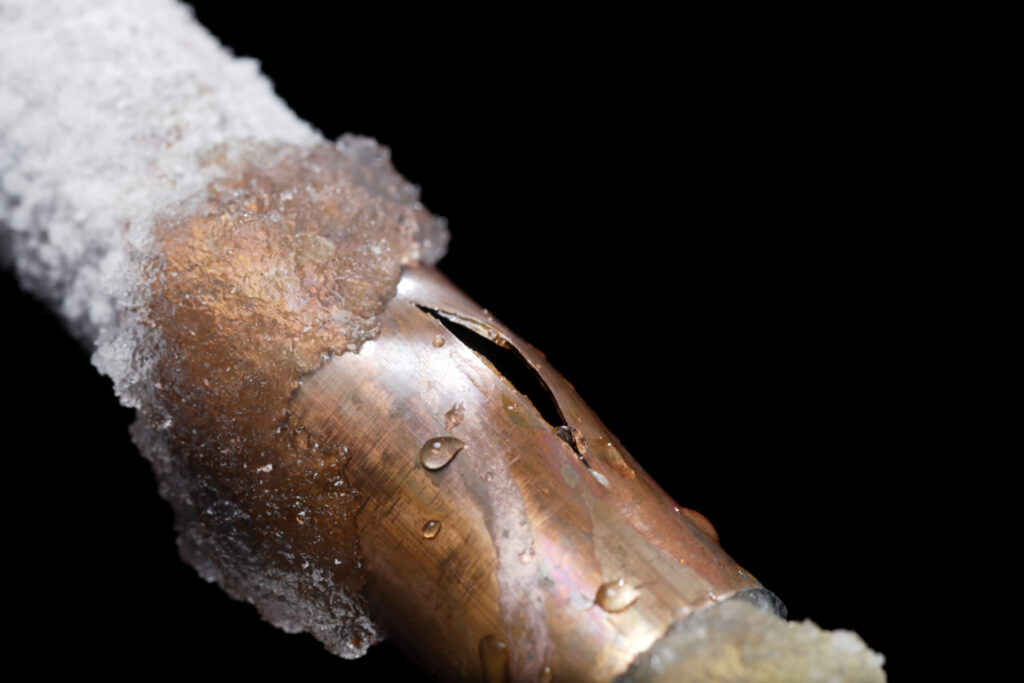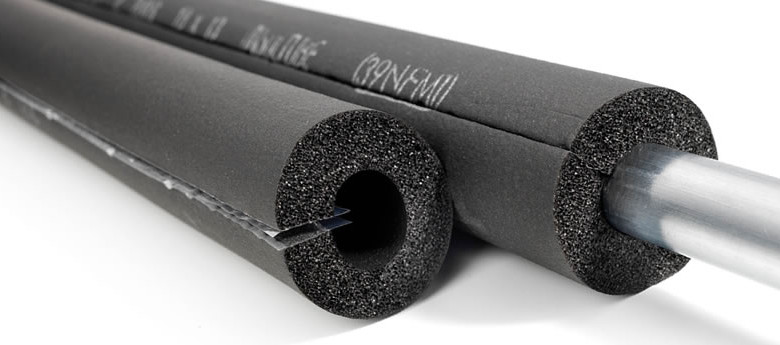We’re just at the tail end of a cold snap here in the Northeast where we’ve seen temps in the single digits for the past few days. When it gets this cold, frozen pipes can become a major issue. While most common in older homes, pipes can freeze in newer homes too!
Especially in mass-produced cookie-cutter homes where corners are cut during construction. All it takes is one section of insulation to be missing from an exterior bathroom wall for pipes to freeze. In this post, we’ll highlight tips to keep your pipes from freezing.

Why Are Frozen Pipes Bad?
At first glance you may think that having frozen pipes is simply a nuisance. In many cases, that’s all it is: you don’t have water flowing in a certain faucet for a period of time. In other cases, the pipes can actually burst, causing major flooding and damage to your home.
Why Do Frozen Pipes Burst?
Once water starts to turn to ice, it creates a blockage in the pipe. This blockage keeps any water from flowing through the pipe at that point. Further, it may result in water being trapped between the ice blockage and a closed spigot. Since water expands as it turns to ice, it begins to create pressure in the pipe. Since this pressure has nowhere else to go, the pipe ends up expanding from the inside out until it bursts. Water then just keeps flowing from the burst pipe until someone notices and closes the valve.

Tips to Avoid Frozen Pipes
The best way to handle frozen pipes is to avoid them altogether. Follow these tips to prevent frozen pipes from causing damage to your home:
- Leave the Water Dripping on Cold Nights. Water has a much harder time freezing when it is flowing. On cold nights, open the faucets slightly throughout your house. This is especially important for pipes in exterior walls. These pipes will be much more prone to freezing than pipes in interior walls.
- Insulate Problem Pipes. In old homes like mine, you will start to know which pipes freeze. Adding foam insulation to these pipes can keep them from freezing. It’s inexpensive and easy to apply, and helps shelter the pipe from the cold air nearby.
- Leave Cabinet Doors Open. Often the pipes in a kitchen or bathroom can freeze inside cabinets. Even though the room itself may be warm, the air inside the cabinets can be below freezing on a cold night. Open the cabinets to let the warm air in and keep the pipes from freezing.
- Turn The Heat Up. People often turn the heat down on cold nights to save money. When it’s really cold, do the opposite! Raising the temperature in the house can help prevent those really cold areas from freezing.
- Put a Space Heater in Cold Areas. In my house, there’s a section of the basement that extends under my back porch. This area is extremely cold, and is the one spot where pipes can freeze. On cold days (like this week), I run a space heater in this area to keep the pipes from freezing.
- Use Heat Tape or Heated Cables. Apply a heat source to the area where pipes tend to freeze. This is a more “involved” solution, as you’ll need to turn it on and off at times. Consider this as a last resort if insulation and leaving faucets dripping doesn’t do the trick.
- Make Sure You Have Enough Heating Oil. If you run out of heating oil, you will have no heat. With no heat, your pipes will be very likely to freeze. Order heating oil online when you’re at a quarter of a tank to prevent a runout. If you do run out of oil, follow these steps here. You can also grab 5 or 10 gallons of diesel to keep the heat on until the truck arrives.

Always Inspect Cold Areas
Catching frozen pipes before they burst will save you thousands of dollars and lots of headaches. Always turn the heat up when the temperatures are forecast to be extremely low. Touch the baseboards in various corners of the house to make sure they’re all warm. This will indicate that water is flowing and there is not a blockage.
Leave your faucets dripping, leave those cabinet doors open, and hopefully you have no issues. If you do have frozen pipes, call a plumber right away! Sometimes the pipes can burst when thawing, so you’ll want a professional there to shut the water off right away if this happens.
Happy heating,
Steve



